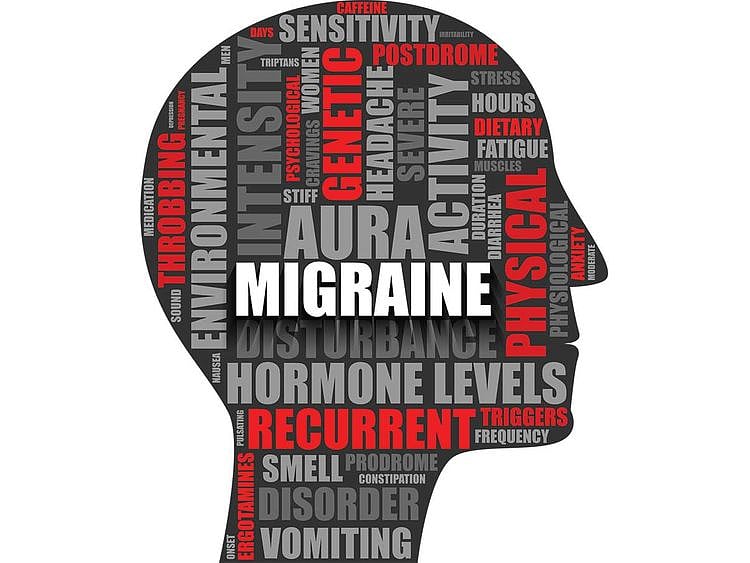There are many different types of migraine, which usually include an intense, throbbing headache, typically felt on one side of the head. You may experience symptoms a few days before a migraine attack, such as changes in mood, appetite and energy levels. The symptoms you may experience can often depend on the type of migraine you have.
Let’s start with the three most common types of migraine.
1: Migraine without Aura
Migraine without aura is the most common type of migraine. An attack is usually felt as an intense, throbbing headache, usually to one side of your head, lasting anywhere between four hours and three days.
2: Migraine with Aura
Migraine with aura means you may experience the aura stage before getting a headache. Aura includes a wide range of neurological symptoms and can last from 5 to 60 minutes in the lead up to a headache. Aura is a set of neurological disturbances, such as blind spots, slurred speech and dizziness.
3: Migraine Aura without Headache
Migraine aura without headache has the warning signs of a migraine – the aura, or neurological disturbances – but the headache itself doesn’t happen.
Other less common types of migraine:
4. Chronic migraine is migraine that you experience for 15 or more days in a month.
5. Retinal migraine (known also as ocular migraine) is a type of migraine attack where you lose vision or experience disturbances in one eye.
6. Abdominal migraine is migraine where pain is felt in the abdomen rather than as a headache and causes stomach pain, nausea and vomiting. This type of migraine is more common in children.
7. Menstrual migraine is linked to a woman’s menstrual cycle, and generally occurs within a couple of days either side of a period.
8. Migraine with brainstem aura (formerly known as basilar migraine) which can cause loss of balance, double vision, difficulty speaking, and fainting.
9. Hemiplegic migraine is a rare but severe form of migraine that causes temporary paralysis, usually to one side of your body. For some people, the aura symptoms can last as long as a few weeks.
10. Ophthalmoplegic migraine, is another rare type of migraine where there is a weakness in the muscles of the eye. It particularly affects young people. In addition to headache, people experience visual symptoms like dilation of the pupils, problems moving the eyes and drooping of the upper eyelids.
11. Vestibular migraine, also known as migraine associated vertigo, can cause destabilising symptoms like dizziness and vertigo.
12. Status migrainosus is a type of migraine where headache symptoms last for three or more continuous days.4 With this form of migraine, there is also risk of dehydration and sleep loss as a result of prolonged pain and vomiting.
Knowing what migraine type you might have, or at the very least, understanding the migraine symptoms you’re experiencing, can help you and your healthcare professional get an accurate diagnosis and a management plan for the best possible care.
Sign up for the Daily Briefing
Get the latest news and updates straight to your inbox
Network Links
GN StoreDownload our app
© Al Nisr Publishing LLC 2025. All rights reserved.
